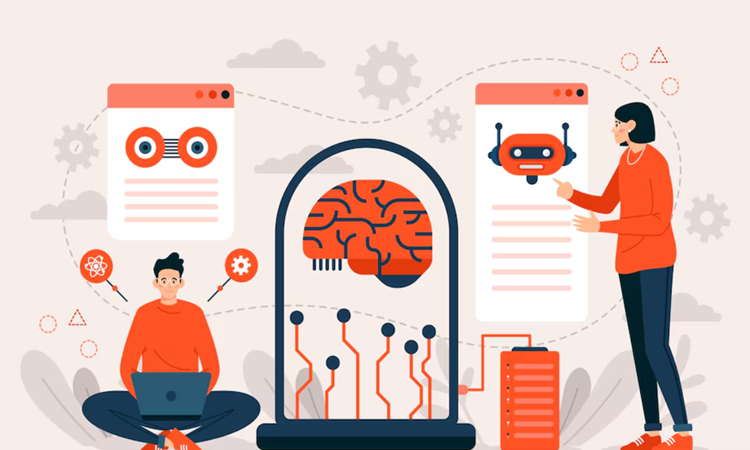As the digital landscape draws the world ever closer together, the ability to span linguistic divides has never been more crucial. Artificial intelligence is at the forefront of this cultural convergence, transforming traditional language learning with innovations that accelerate and enrich the educational experience.
The Evolution of Language Learning with AI
Forget the old-school approach of rote memorization in stark classrooms. The modern method, powered by AI, offers an adaptive and interactive learning environment tailored to individual preferences and learning speeds. AI applications employ sophisticated algorithms to craft personalized lessons, featuring adaptive tests and instant feedback on pronunciation. This bespoke learning journey is not just efficient—it’s engaging and effective.
Visual Learning Enhanced by AI
Educational AI generated visuals are revolutionizing how we understand and retain new languages. These tools convert complex grammatical rules and unfamiliar vocabulary into vivid, easily digestible visuals. This method aids in faster comprehension and longer retention, making learning feel less like a chore and more like a fascinating exploration of a new world.
The Personal Touch in AI Learning
AI-driven learning platforms are intuitively designed to mimic the best human teaching methods, providing emotional and educational support. They foster online communities where learners can interact, exchange knowledge, and practice together, adding a layer of human interaction that enriches the learning experience. Through these platforms, AI becomes more than just a tool—it becomes a mentor and a collaborator in the language learning journey.
Real-Life Examples of AI in Action
Maria, the Aspiring Novelist
Dreaming of setting her novel in the picturesque landscapes of Italy, Maria leveraged an AI language tool to master Italian. The app offered not just lessons but cultural insights and nuanced expressions, enriching her understanding and her narrative.
Tom, the Travel Enthusiast
With a trip to Japan looming, Tom turned to an AI app that blended traditional lessons with
augmented reality. He practiced everyday interactions, such as ordering food or asking for directions, within a virtual yet realistic Japanese setting, boosting his confidence and competence.
Anita, the Multinational CEO
As her business expanded into Latin America, Anita adopted an AI learning platform that tailored Spanish lessons to fit her busy schedule. The real-time language training during actual meetings enhanced her communication skills, proving invaluable in her professional interactions.
Innovative Technologies Elevating Language Learning
AI tools are continually evolving, incorporating advanced technologies like voice recognition and deep learning. These innovations enhance the accuracy of feedback on pronunciation and grammar, helping learners quickly advance toward fluency.
Personalized Learning Through Data-Driven AI
Artificial intelligence shines brightest when it taps into vast datasets to customize the learning process for each individual. By analyzing patterns in a user’s learning habits, performance, and preferences, AI systems can not only adapt to the current level of the learner but also anticipate future learning needs. This predictive capability ensures that the curriculum remains challenging yet achievable, optimizing the pace and content for maximum engagement and effectiveness.
For instance, if a learner struggles with verb conjugations in a new language, the AI can identify this trend through their responses and automatically adjust the focus of future lessons to fortify this weak spot. Conversely, if a learner shows proficiency in vocabulary, the AI can escalate the difficulty or introduce new, more complex words to maintain a steady learning curve.
Furthermore, AI can personalize the times and methods of learning reminders based on user activity logs. It can suggest optimal study times when a learner is most alert or propose review sessions when the learner typically has breaks in their day. This level of personalization extends beyond simple convenience; it transforms language learning into a seamlessly integrated part of daily life, making the process more natural and much more effective.
This added layer of AI-driven personalization not only tailors the learning experience to suit individual preferences and schedules but also enhances retention and fluency by continuously aligning learning objectives with personal progress and goals.
Conclusion
AI is not just reshaping how we learn languages; it is redefining the possibilities for global communication. These tools offer more than efficiency—they provide a gateway to understanding diverse cultures and connecting with the world on a deeper level. As we embrace AI in our
language learning journeys, we open ourselves up to a universe of opportunities, enhancing personal and professional relationships across borders.

